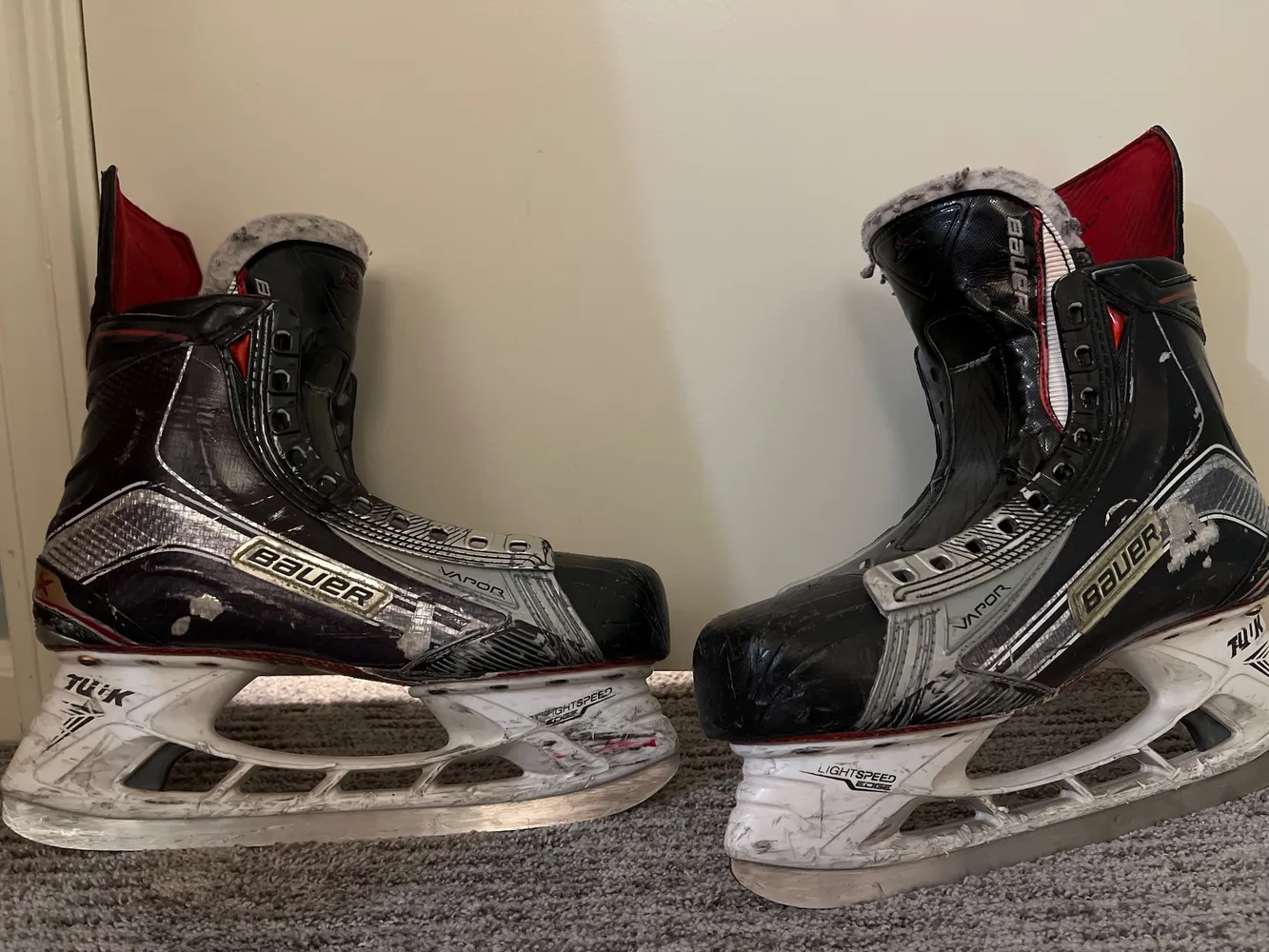Signs You Need to Replace Your Hockey Skates
Your hockey skates are the foundation of your on-ice performance. They provide the power for your stride, the stability for sharp turns, and the precision for quick stops. But even the most reliable skates have a lifespan. Holding onto a worn-out pair can hinder your skating, increase your risk of injury, and ultimately hold you back on the ice.
Here are four key signs that it's time to trade in your current skates:
1. Your hockey skates are losing ankle support
Hockey skates are designed to provide firm ankle support, minimizing the risk of sprains and twists. Over time, the boot can break down, losing its rigidity and compromising its ability to hold your ankle securely. This can lead to sloppy skating technique, decreased agility, and a higher risk of injury. If your skates feel loose around the ankles, or if you notice your ankles rolling inwards or outwards when you turn, it's definitely time to upgrade.
Expert Tip: Moisture buildup inside the boot can break down the materials and reduce support over time. Make sure to properly dry your boots after each use. Untie the laces and open up the boot as much as possible. Stuff the skates with newspaper or a moisture-absorbing material to help wick away sweat. Avoid using artificial heat sources like dryers or heaters, as this can damage the materials. Let your skates air dry completely at room temperature.
2. Your hockey skates have worn-out blades
Dull blades can make it difficult to generate power for your stride, reduce your ability to dig into the ice for sharp turns and stops, and even contribute to falls. You might find yourself slipping and sliding more often, impacting your overall agility and maneuverability. Additionally, nicks and chips in the blade can snag on the ice, causing you to lose your edge and potentially leading to falls. If frequent sharpening doesn't seem to restore your edge bite, it's likely time for either new blades or new skates.
Expert Tip: How often you need to sharpen your skates varies heavily between players. In general, hours on the ice, skill level, and ice quality can all affect how often you should sharpen your blades. If you spend more time on the ice, play at a higher level, and/or skate on rougher ice, you should make sure to sharpen your skates more often, as these conditions can cause the blades to dull faster.
3. Your hockey skate boots are breaking down
Hockey skates endure a lot of wear and tear. Over time, the boot can develop cracks, tears, or worn-out lining. These imperfections compromise the structural integrity of the skate, making it less comfortable and worsening your performance on the ice, perhaps even leading to injuries. If your skates are showing signs of significant wear and tear on the outer boot or inner lining, it's time for a replacement.
Expert Tip: After getting off the ice, wiping your boots down, inside and out, and allowing them to dry at room temperature can help keep them in good condition. Additionally, using a leather conditioner prior to getting on the ice can help prevent the buildup of moisture in the first place, ensuring the longevity of your boots.
4. Your hockey skates don't fit like they used to
A good-fitting skate is crucial for optimal performance and comfort. Over time, your feet might change shape, or the boot of your skates might stretch or break down, causing a once-perfect fit to become sloppy. Ill-fitting skates can lead to blisters, foot pain, and decreased control over your movements. If your skates feel loose or pinchy, or if you experience discomfort while skating, it's a good sign you need a new pair with a proper fit.
Expert Tip: If you’re looking to break in a pair of skates, heat molding can be a good option to ensure the skates are the perfect fit for your feet. With heat-moldable skates, you can get them professionally molded to your feet to ensure you and your skates move as one on the ice. You can also try wearing thick socks to help break in new skates and minimize friction that might cause blisters. Moisture-wicking socks can help keep your feet dry and reduce the risk of chafing.
Check out: The Best Beginner Hockey Skates for 2024
Luckily, replacing your skates doesn't have to break the bank. SidelineSwap offers a huge selection of new and used hockey skates from players around the country.

